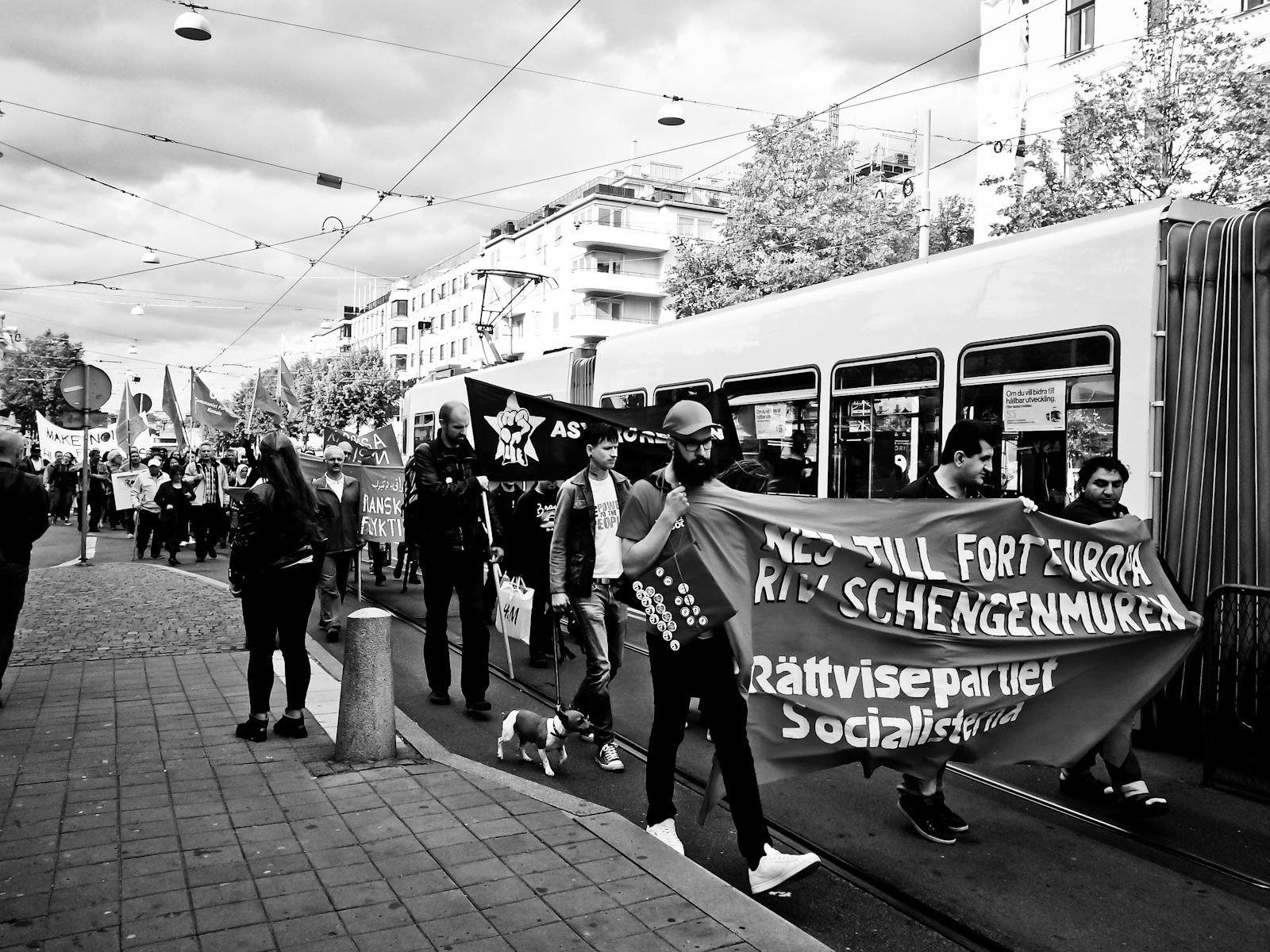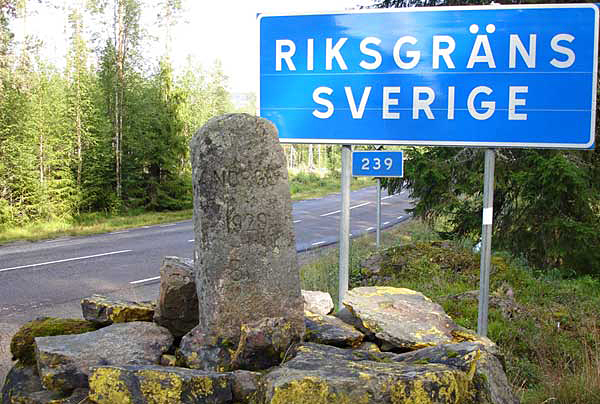Sweden Introduces Border Control
Breaking News: The government has confirmed that Sweden has introduced temporary border control.
-
 Demonstrations in Gothenburg
Demonstrations in Gothenburg -
-
The Swedish Migration Board sounded the alarm on Wednesday that the steadily increasing pressure on the authority has finally reached critical levels and that Migrationsverket is now unable to fulfill its responsibilities.
-
 Old Swedish border marker along the border to Norway. Image source: Public Domain
Old Swedish border marker along the border to Norway. Image source: Public Domain -
-
"We can no longer guarantee shelter," Mikael Hvinlund, Migrationsverket, said at Wednesday's press conference.
-
"We have since September registered about 80,000 asylum seekers. That is as many as we registered during the entire year of 2014. We have a situation where people are forced to sleep in tents outside our offices, and are sleeping within our reception center. We have a situation where Migrationsverket is no longer able to meet their mission which is to provide shelter to the applicants," said Hvinlund.
-
Anders Ygeman, Minister for Home Affairs, said on Wednesday evening that border controls would take place on the Öresund Bridge and ferry terminals in southern Sweden and apply for 10 days. The 10-day restriction can be extended in 20-day intervals.
-
The government has also referred a proposal that companies operating at Swedish ports shall have identification requirements on their ferries.
-
"The idea is that this will contribute to increased security in our ports and on our ferries. It will make it easier to identify those who come to Sweden seeking asylum," said Ygeman.
-
Stena Line began checking passports early this morning in Rostock. The ferry arrives in Trelleborg after noon today.
-
The Schengen agreement, signed in 1985, abolished border control between most EU countries allowing travelers to easily move about without having to show a passport. While the issue of border control has been extremely controversial in the last several months, the agreement does allow a country to reinstate border control if there is a "serious threat to its public policy or internal security."
-
The introduction of border control means that refugees coming to Sweden have three options: to return to their country of origin, to seek asylum in Sweden, or those refugees who are passing through Sweden en route to another destination are to choose a different route (not through Sweden) for passage.
-
Despite border control, the number of refugees could potentially increase as those given the above three options may decide to stay in Sweden and register for asylum.
-
According to Prime Minister Stefan Löfven, border control is not about decreasing the amount of refugees in the country as much as it is to maintain a measure of order in refugee reception.
-
In response to Sweden’s decision, Denmark’s Prime Minister Lars Løkke Rasmussen said on Wednesday that Denmark will not follow Sweden’s example for border control.
-
"It is a decision the Swedes have made, and tonight I have been here trying to figure out what is really going on. What is clear is that the Swedes want order," said Rasmussen at the EU summit in Malta.
-
"It can mean that some of those who had an ambition of traveling on to Finland or Norway will now instead give their asylum applications to Sweden," said the Danish Prime Minister to DR Nyheder.
-
For Sweden’s neighbor Finland, border control in Sweden is good news.
-
"Sweden’s decision to impose border controls is expected and good news for Finland. We want to improve migration control in the Nordic region," said Finnish Interior Minister Petteri Orpo on Wednesday evening.
-
By Lisa Mikulski
-
-
